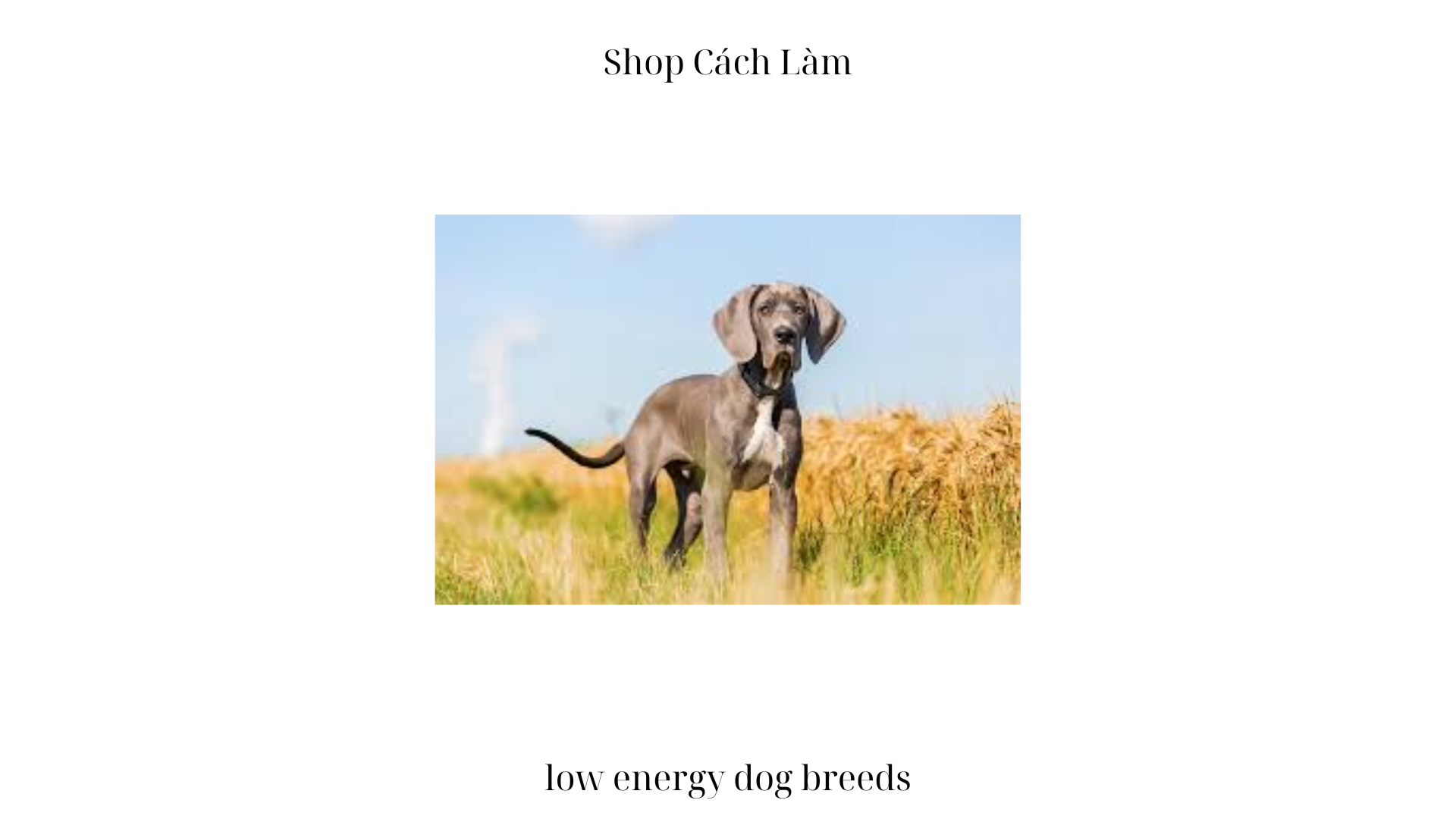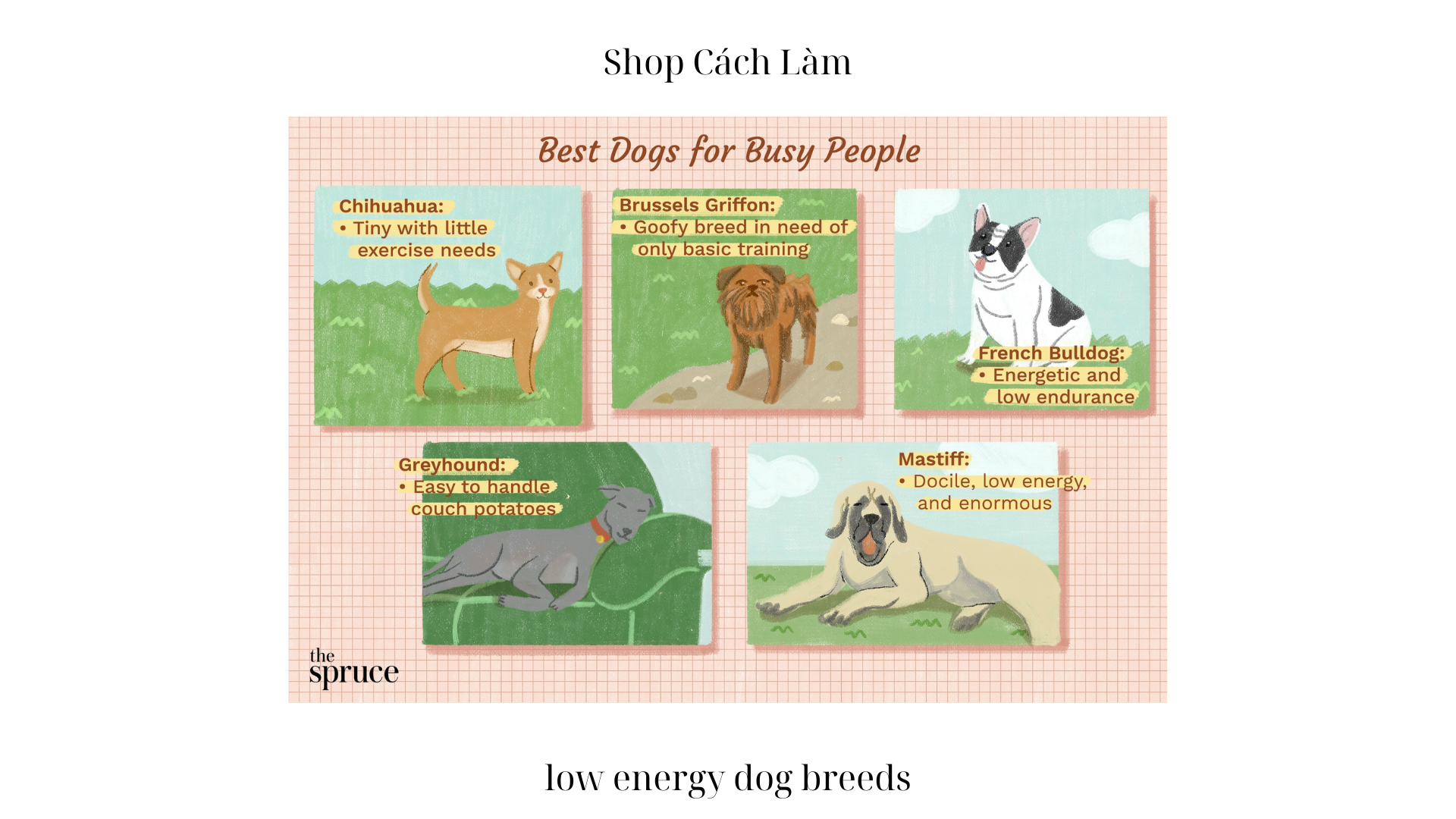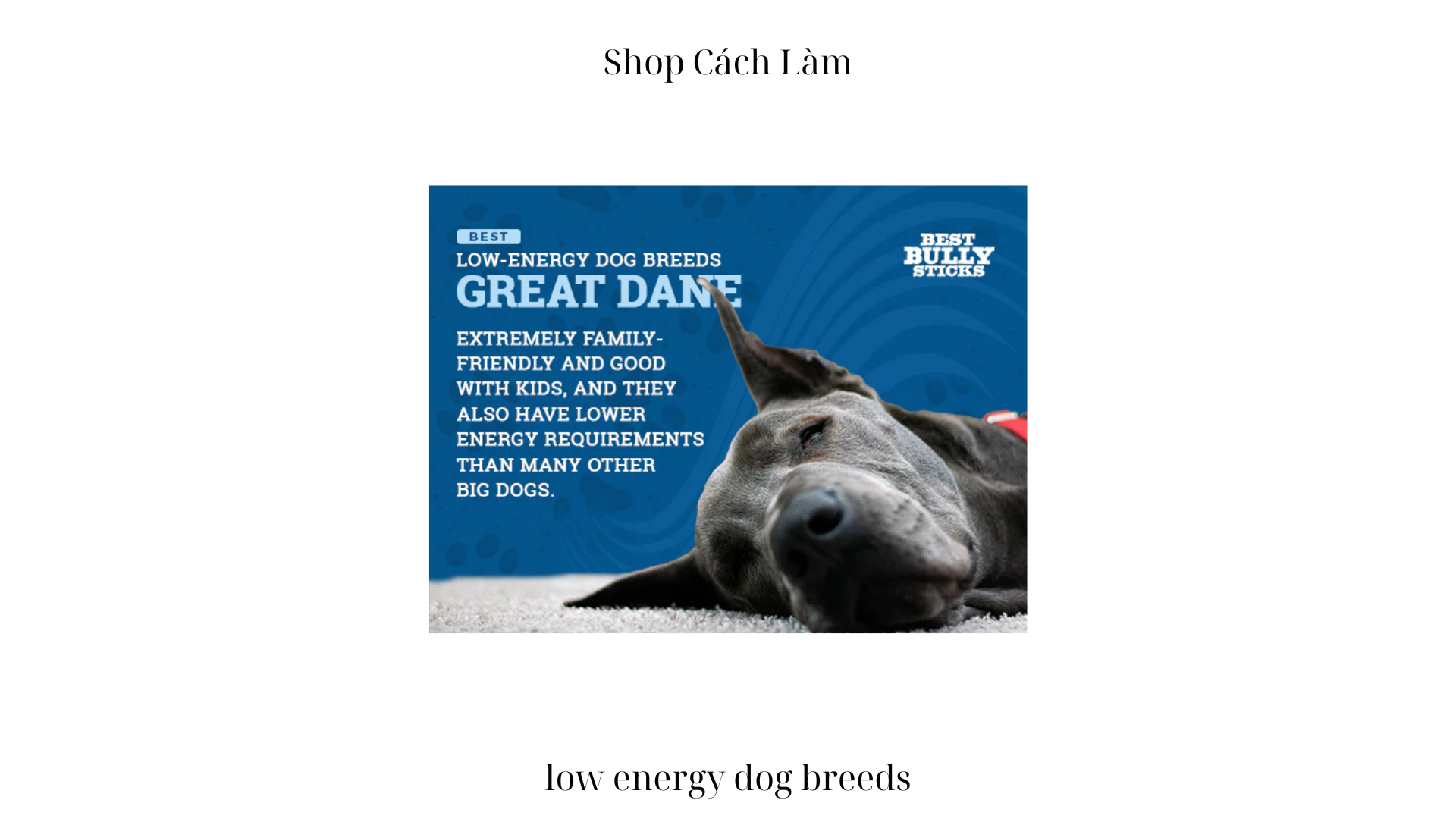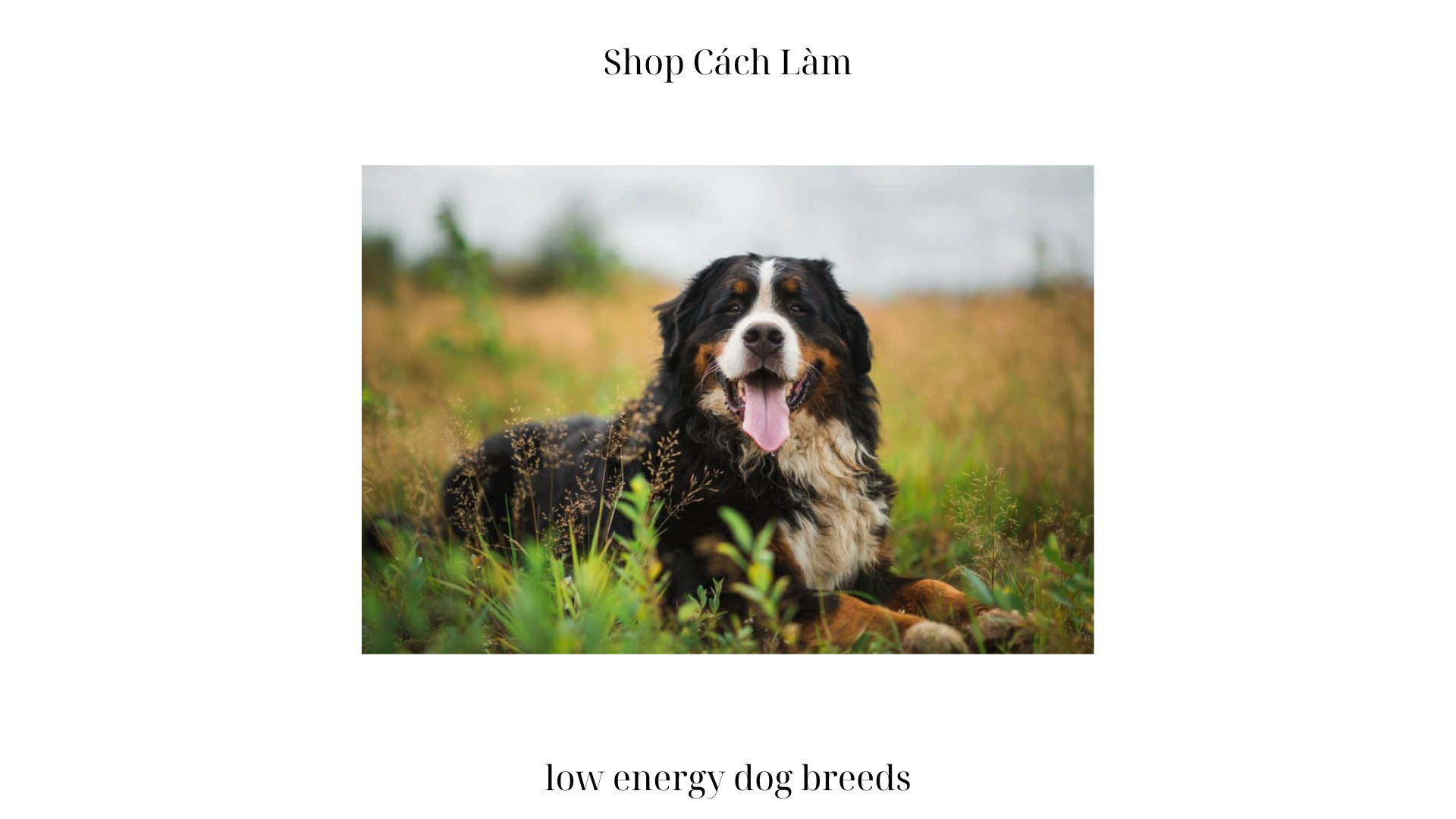In the dynamic world of dog ownership, where energy levels and activity requirements can vary significantly among breeds, the concept of low energy dog breeds has become increasingly appealing to many pet owners. Whether Cachlamshop seeking a calmer canine companion for a relaxed lifestyle, or simply want to provide a suitable home for a less energetic pup, understanding the characteristics and needs of low energy dog breeds is essential.
Low Energy Dog Breeds: Uncovering Best 10 Types

As the demand for low-maintenance, low-energy dogs continues to grow, pet enthusiasts and prospective owners alike have turned their attention to discovering the most suitable breeds that fit this profile. From the gentle giants to the diminutive lap dogs, the canine kingdom offers a diverse array of low energy breeds, each with its own unique personality and care requirements.
One of the primary reasons behind the rising popularity of low energy dog breeds is the busy and often sedentary lifestyles of modern pet owners. Many individuals and families find themselves juggling work, social commitments, and personal obligations, leaving little time for the high-intensity exercise and playtime often required by more energetic dog breeds. Low energy dogs, on the other hand, thrive in environments that prioritize relaxation, cuddling, and moderate physical activity, making them an ideal match for those seeking a more laid-back canine companion.
To assist pet owners in navigating the landscape of low energy dog breeds, we have compiled a comprehensive guide to the top 10 breeds that are known for their calm, relaxed demeanors and lower exercise needs. These breeds have been carefully selected based on factors such as their inherent energy levels, exercise requirements, and overall temperament, ensuring that they provide a suitable fit for those seeking a more tranquil, low-maintenance pet.

- Bulldog: The quintessential low energy breed, Bulldogs are renowned for their laid-back personalities and minimal exercise needs. These stocky, wrinkly-faced companions are content with short, leisurely walks and enjoy spending quality time cuddling with their owners.
- Cavalier King Charles Spaniel: Gentle, affectionate, and eager to please, the Cavalier King Charles Spaniel is a low energy breed that thrives on human companionship. These compact pups are happiest when snuggling up on the couch or taking leisurely strolls.
- French Bulldog: With their distinctive bat-like ears and charming personalities, French Bulldogs are a popular low energy breed. These compact, muscular canines require moderate exercise and are often satisfied with short playtime sessions and couch-potato activities.
- Greyhound: Despite their reputation as speedy racers, Greyhounds are surprisingly low energy dogs when not in competition. These graceful hounds are content with brief bursts of activity followed by extended periods of lounging and relaxation.
- Pug: Known for their adorable, wrinkly faces and clownish antics, Pugs are a low energy breed that prefers a more sedentary lifestyle. These compact companions enjoy leisurely walks, playtime, and plenty of cuddle time with their beloved owners.
- Basset Hound: With their distinctive low-to-the-ground stature and droopy features, Basset Hounds are the epitome of low energy dog breeds. These gentle, easygoing canines are more interested in sniffing around and napping than engaging in high-intensity activities.
- Dogue de Bordeaux: Also known as the French Mastiff, the Dogue de Bordeaux is a large, muscular breed with a surprisingly low energy level. These imposing yet affectionate dogs are content with moderate exercise and plenty of time spent lounging alongside their families.
- English Bulldog: Closely related to the American Bulldog, the English Bulldog is a low energy dog breeds renowned for its calm, low energy temperament. These stocky, wrinkly-faced companions are more inclined towards cuddling and short walks than high-intensity exercise.
- Bichon Frise: Despite their fluffy, playful appearance, Bichon Frises are low energy dog breeds considered low energy dogs. These small, hypoallergenic canines are happy to engage in brief playtime sessions but are equally content with lounging and snuggling with their owners.
- Italian Greyhound: While Greyhounds are low energy dog breeds known for their racing abilities, the smaller Italian Greyhound is a low energy breed that prefers a more relaxed lifestyle. These slender, elegant pups are content with moderate exercise and plenty of time spent napping and bonding with their human companions.

When it comes to selecting a low energy dog breed, it’s important to consider not only the breed’s inherent characteristics but also the specific needs and lifestyle of the pet owner. Each of the breeds mentioned above has its own unique set of requirements, from grooming needs to exercise levels, and it’s crucial to research low energy dog breeds and evaluate these factors to ensure a harmonious and fulfilling partnership between the dog and its owner.
Additionally, it’s worth noting that even within a low energy breed, individual dogs may exhibit varying levels of activity and energy, depending on factors such as age, temperament, and environment. As such, it’s always advisable to interact with the specific dog and observe its behavior before making a final decision.
By understanding the unique traits and needs of low energy dog breeds, prospective owners can make informed decisions and provide their canine companions with the ideal living environment that caters to their calmer, more relaxed nature. Whether you’re drawn to the gentle giants, the diminutive lap dogs, or the regal hounds, the world of low energy dog breeds offers a wealth of options for those seeking a tranquil, low-maintenance pet.
